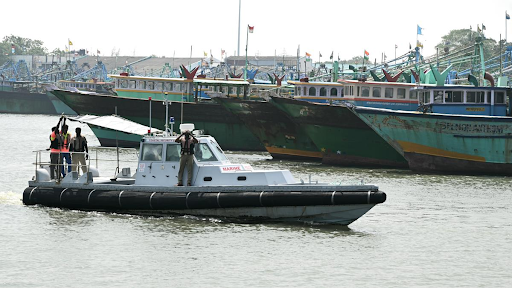





Source: TimesofIndia
Disclaimer: Copyright infringement not intended.
Context
Details
|
Missile Name |
Type |
Range |
Speed |
Guidance System |
Status |
Key Features |
|
Astra |
Beyond Visual Range (BVR) |
80-110 km |
Mach 4.5+ |
Active Radar Homing |
Inducted |
India's first indigenous BVR air-to-air missile, capable of high agility. |
|
MICA |
Short to Medium Range |
500 m to 80 km |
Mach 4 |
Infrared & Active Radar |
In Service (IAF) |
Dual-role missile with both IR and radar guidance. |
|
R-73 |
Short Range |
30 km |
Mach 2.5 |
Infrared Homing |
In Service (IAF) |
High maneuverability, commonly used with Su-30MKI and MiG-29. |
|
R-77 (RVV-AE) |
Medium Range |
80 km |
Mach 4.5 |
Active Radar Homing |
In Service (IAF) |
Designed for high-speed aerial combat, operates in all weather conditions. |
|
Python-5 |
Short Range |
20 km |
Mach 4 |
Infrared Homing |
In Service (IAF) |
Advanced short-range missile with high agility and advanced target acquisition. |
|
Novator K-100 |
Ultra Long Range |
300-400 km |
Mach 3.3 |
Passive Radar Homing |
Under Development |
Designed to neutralize high-value targets like AWACS and aerial tankers. |
|
Derby |
Beyond Visual Range (BVR) |
50 km |
Mach 4 |
Active Radar Homing |
In Service (IAF) |
Used on Mirage 2000 and Tejas, designed for interception and air superiority. |
|
Meteor |
Beyond Visual Range (BVR) |
Over 100 km |
Mach 4+ |
Active Radar Homing |
Future Induction (IAF) |
Highly agile and equipped with a throttleable ducted rocket (ramjet). |
Air-To-Air Missiles From Around The World
|
Missile |
Country of Origin |
Type |
Range |
Speed |
Guidance System |
Notable Features |
|
Meteor |
France/Germany/UK |
Beyond Visual Range (BVR) |
> 100 km |
> Mach 4 |
Active Radar Seeker, Two-way data link |
Largest no-escape zone of over 60 km; solid-fueled ramjet motor for high-speed performance |
|
AIM-120 AMRAAM |
USA |
BVR |
75-180 km |
Mach 4+ |
Active Radar |
Widely used by NATO; effective in all-weather conditions |
|
R-77 (AA-12 Adder) |
Russia |
BVR |
80-160 km |
Mach 4+ |
Active Radar |
Known for its high maneuverability; used on various Russian aircraft |
|
PL-15 |
China |
BVR |
> 200 km |
Mach 4 |
AESA Radar |
Longest range among current air-to-air missiles; carried by J-20 fighter jet |
|
IRIS-T |
Germany |
Short Range |
25 km |
Mach 3 |
Infrared Imaging |
High off-boresight capability; excellent in close combat situations |
|
MICA |
France |
Multi-role (BVR/Short) |
80 km |
Mach 4 |
Infrared/Radar |
Highly versatile, capable of both radar and infrared guidance |
|
AIM-9X Sidewinder |
USA |
Short Range |
35 km |
Mach 2.5 |
Infrared |
Advanced targeting for close combat; high off-boresight capability |
|
Python-5 |
Israel |
Short Range |
20 km |
Mach 4 |
Infrared Imaging |
360-degree engagement capability; used by various international air forces |
|
ASRAAM |
UK |
Short Range |
25 km |
Mach 3+ |
Infrared |
High speed and agility; used by Royal Air Force |
|
Derby |
Israel |
BVR |
50 km |
Mach 4 |
Active Radar |
Effective in both air-to-air and surface-to-air roles; used in several countries |
Must read articles:
Sources:
|
PRACTICE QUESTION Q: Consider the following statements regarding air-to-air missiles developed in India:
Which of the statements given above is/are correct? a) 1 and 2 only Answer: c) |





© 2025 iasgyan. All right reserved